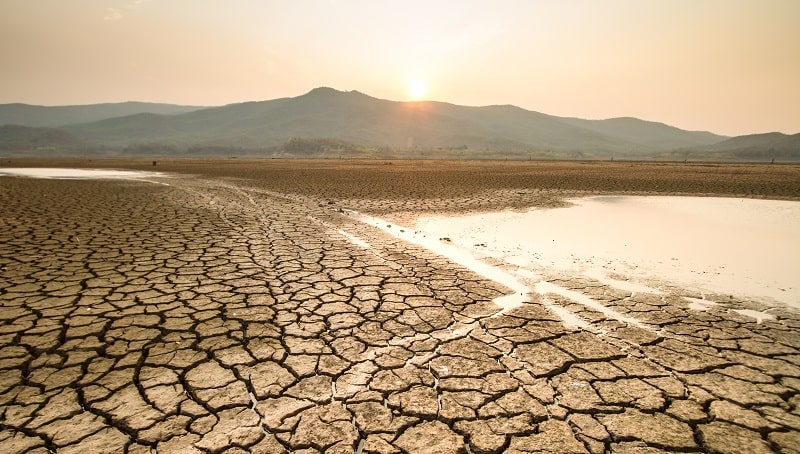Methane gas is found in landfills, manure, and wetlands. Both natural and man-made activities produce it. With large amounts of methane gas in the atmosphere, it ultimately results in climate change. That’s why we need to understand methan gas, and take action to help save Mother Earth.
What are Greenhouse Gases
According to NASA, climate change is extensively caused by greenhouse gases which block the heat in the Earth’s atmosphere from escaping to space. The known greenhouse gases are carbon dioxide, methane, and nitrous oxide.
Although these gases are essential to sustain life, these can cause climate change when present in large amounts in the Earth’s atmosphere.
There are three major greenhouse gases, namely: methane, carbon dioxide, and nitrous oxide.
Although methane is found in lesser amounts compared to carbon dioxide in the Earth’s atmosphere, it is more dangerous. In fact, methane is capable of trapping radiation and can remain for over 12 years. Since they absorb more heat and energy, they are more effective at trapping heat than carbon dioxide.
What are Methane Gases
According to Britannica, methane gas is an odorless, colorless and flammable gas. Its chemical formula is CH4.
It has a heating value of about 1000 Btu/ft3. Production of Methane can be done both by nature and through human activities.
Methane buildup came from the routes of anaerobic digestion, a decomposition process from organic materials. The byproduct of its process is in the form of different types of gases which include the component of methane.
Biogas, which is a biofuel, is made up of 50 percent to 75 percent methane gas with the rest consisting of carbon dioxide and other trace gases. Natural gas is also composed of methane, which is one of the significant energy resources.
Other sources of methane gas are evident in septic tanks and other sewage systems; burning of biomass and coal; livestock farming and other fossil fuel production.
Uses of Methane Gas (CH4)
CH4 or methane gas is used to produce chemical products like ethanol, methyl chloride, and even ammonia, which are used as fertilizers and explosives.
Methane gas has also been a common fuel source used for ovens, turbines, automobiles, and rockets. It is also one of the key sources in electricity generation.
When methane gas is not completely burnt, it yields into carbon black that is made to formulate rubber that is used to make tires. Protective coating on most of our electronic circuits is also composed of carbon black.
Greenhouse Gases and Climate Change
According to EPA, methane gas emission has increased its impact to the greenhouse effect by 150 percent for more than 200 years.
Although the greenhouse effect plays a vital role in making the Earth habitable, the imbalance of gas collection has increased the Earth’s temperature resulting in climate change.
Records from NASA revealed that February 2018 was the 6th hottest global temperature ever recorded for the last 138 years in history. It resulted in an unusual heat wave in the Arctic which causes sea ice to melt, and winter warming events are becoming more incessant and intense. While artic zones are experiencing a glacial meltdown, tropical regions, on the other hand, suffer harsher and hotter climates than before.
With NASA and EU’s satellite documentation for 25 years, the ocean level rise increased tremendously. Sea level may continue to rise to 26 inches by 2100 and may root in for coastal storms.
Natural hazards that were captured by NASA include frequent and extreme wildfires, earthquakes, tsunamis, floods, landslides, severe weather, as well as winter and tropical storms.
Reducing Carbon Emissions
Case studies have been published to show that oil and gas industries can lessen their emissions of methane. ICF reveals that if these industries cooperate in adopting emissions-control technologies. Up to 40 percent can be reduced in methane gas emission once followed.
8 Ways To Create a Smaller Carbon Footprint
In our own way, we can also help reduce carbon emissions and leave a smaller carbon footprint. Here are eight (8) ways that we can do this:
1. Switch to renewable energy
By switching to renewable energy sources such as solar, geothermal, and hydropower, you can dramatically reduce carbon footprint. By reducing our dependency on fossil fuels such as oil and coal, we are doing our part in making the world a healthier and livable place to live in.
2. Take a walk or ride a bike
Aside from the health benefits that walking and biking can give you, it is also healthy for the planet. Instead of driving a car, why not take a walk or drive a bike to your favorite coffee shop or restaurant? Plus, regular exercise has tremendous health benefits and boosts physical and mental health. It also has zero carbon footprint and causes no air pollution.
3. Drive an electric-powered automobile
Another alternative solution to reducing carbon footprint is to drive an electric-powered vehicle, which doesn’t emit carbon dioxide.
4. Fly less
Air flights contribute to the most extensive carbon emission. Reducing the frequency of your air travel will downsize air traffic moreover when more will follow, the need to have more scheduled flights will decrease.
5. Conserve electricity
Another way to help save the planet is to conserve power. You can do that by turning off the lights when you no longer use it. You can also do the dishes manually instead of using the dishwasher or just lessening the use of your hair dryer will do. Be careful when using your appliances in standby mode. Remember, they consume more energy than when you are using it. So unplug your electronics when not in use as much as possible.
6. Buy energy-saver appliances
When you plan to update your appliances, it is better you buy those with energy-efficient ratings. It does not only conserve energy usage, but it also saves you money on your power bills. Using LED light bulbs, for example, consume less power than incandescent and fluorescent counterparts.
7. Recycle
Burning plastics and other wastes cause air pollution, produce methane gas and greenhouses, and increases carbon emissions. One alternative solution to this is to recycle plastics, bottles and other scrap materials.
8. Become an advocate
There are several ways to support cleaner alternative energy resources. You can donate a small sum to renewable energy projects in your locale. You can also promote in sharing this article to spread awareness to the whole.
The Bottom Line: Climate Change Affects Us All
Due to the large amounts of methane gas and greenhouse gases in the atmosphere, we are now experiencing the dreaded consequences of climate change.
Today, climate change is not just a figment of the imagination, but a present reality that is affecting the world. We can now see the mounting evidence such as the melting of polar ice caps, increase in sea level, typhoons, floods, and storms to massive drought, heavy sandstorms, and harsher climate conditions.
But, it is never too late to start turning this around. Climate change is primarily a result of human activities that’s why it is still up to us to reverse this downward trend.
We can reduce human activities that produce methane gas and greenhouse gases by switching to renewable energy sources. By lessening our own carbon emissions, we can contribute to a much cleaner, safer environment for ourselves and future generations. We can start in our own homes, and support the cause of saving Mother Earth.
-
Although disproved, the notion of a “climate change hiatus” is one that perpetuates in the…
-
The Arctic Shelf. Areas on our planet are defined by extremes. They represent the harsh…
-
Fossil fuels produce electricity, run car engines, make plastics, and power mills, factories, and industries.…
-
The pika may be the next victim of climate change. Like animals across the globe,…
-
Oxygen is one of the most precious elements on Earth. Humans, plants, animals, and just…
-
If you pay any attention to the impact climate change is having on our planet,…
-
The Colorado River winds its way through the Southwestern United States, ending in northern Mexico.…
-
Some people have proposed carbon sequestration as a solution to global climate change. But what…





